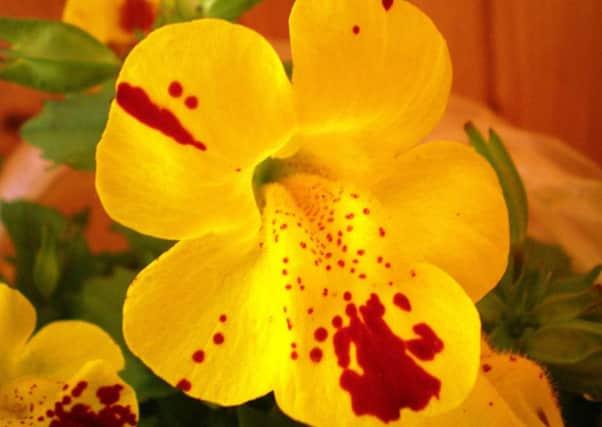Biologist hails ‘big bang’ Scots flower discovery


Evolutionary biologist Dr Mario Vallejo-Marin, from the University of Stirling, first spotted the striking yellow monkey flower on the bank of a stream while enjoying a picnic with his family near Leadhills in South Lanarkshire three years ago.
Now he has tracked down another cluster of the “scientific anomaly” 350 miles further north, near Stromness in Orkney.
Advertisement
Hide AdAdvertisement
Hide AdHe says this second patch of the rare flowers, which evolved independently in an area far removed from the original find, proves the origin of species is “a repeatable phenomenon”.
The new species, a recent creation in evolutionary terms, has occurred through a rare natural hybridisation process between two invasive plants brought to the UK as botanical curiosities from the Americas in the 1800s.
Soon after their introduction, the parent species escaped from gardens and began to grow in the wild along the banks of streams and rivers.
When Dr Vallejo-Martin spotted the first flower in South Lanarkshire he was aware that hybrids of the two American plants it resembled were usually infertile. However, when he noticed this plant possessed seeds he took away a sample for further examination.
Experts at Edinburgh’s Royal Botanic Garden used genetic analysis to confirm he had uncovered a brand new species, which is believed to have formed less than 150 years ago through a rare natural cross between the two alien plants.
Then an expedition to Orkney last year, part of a wider search of the UK, bore fruit when Dr Vallejo-Marin identified an even larger population of the flowers.
“Orkney was a missing region which hadn’t been sampled,” he said.
“There were different varieties of monkey flower on the island, but when we spotted this population I knew it was unusual as after looking at hundreds of plants you get to recognise the subtle differences.
Advertisement
Hide AdAdvertisement
Hide Ad“Usually a species forms once in a particular location, then spreads to other regions.
“In this case the opposite has occurred, as the same species has evolved multiple times in different places.
“It shows that when the conditions are right the origin of species is a repeatable phenomenon.”
After making the initial discovery, Dr Vallejo-Marin named the species Mimulus peregrinus - which translates as the foreigner - in a nod to its origins from two invasive species first brought to the UK from the US and South America.
It is a particularly rare find since hybrid plants of its kind are usually sterile.
Instead, the Scottish flower doubled the amount of DNA in its cells and evolved to form a unique new species in a process known as polyploidisation, the same mechanism by which wheat, cotton and tobacco originated.
“It is impossible to say whether Mimulus peregrinus evolved first in the south or in the north of Scotland, but our discovery of a very young species of this kind has allowed us to study evolution as it happens,” Dr Vallejo-Marin added.
“We only know of a handful of other plant species as young as Mimulus peregrinus and so in this respect it is like looking at the big bang in the first milliseconds of its occurrence.
Advertisement
Hide AdAdvertisement
Hide Ad“The process of evolution it has followed is particularly interesting and adds complexity to our conception of the tree of life.
“Instead of branching out as it grows, Mimulus peregrinus is an example of how some branches can come back together again and spawn new species that are in part the combination of their ancestors.”
The research was completed with colleagues from Queen Mary University of London and with Whitman College and the College of William and Mary in the US.